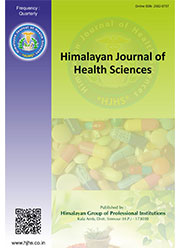Demographical & Geographical Prevalence of Balaroga and Their Preventive Approaches as per Ayurveda
Abstract
Children are the assets who play an important role in the development of a country. Starting phase of their life is the most crucial period as it is the base of their physical, mental and behavioral development. According to Indian demographic profile 26.98% of the population is of children between 0-14 years. India is having high mortality rate of children less than 5 years of age. Most of the death in the Balyavastha occurs due to the Aptarpanjanya Vyadhi (malnutrition). According to the WHO, worldwide the leading causes of death among children under five years of age are acute respiratory infections, diarrhea, congenital anomalies, infectious diseases etc. Ayurveda has described many Balaroga and their Chikitsa under the Kaumarbhritya branch.
References
2. Tripathi B. Charaka Samhita Sutra 7 thedition. Varanasi: Chaukhambha Surbharti Prakashan.
3. Mitra S.K., Rangesh P.R., Venkataranganna M.V., Udupa U.V, Gopumadhavan S., Seshadri S.J. Bone mineralization by OST herbomineral preparation, in experimentally induced rickets in rats, Phytomedicine. 2000; 7(4): 265.
4. Girish k. and Shankara S. B Neem-A GreenTreasure Electronic Journal of Biology. 2008; 4(3).
5. Bhinde S.RASAYANA: A better Alternative for Disease Prevention .Journal of Ayurveda and Holistic Medicine. 2013; Vol (1).
6. Parthsarthy A, editor-in-chief I A P Color Atlas of Pediatrics, chap. 16th. edition 1st. New Delhi: Jaypee Brothers Medical Publishers; 2012.
7. Bhat SR (Ed.). Achar’s Text Book of Pediatrics. 4th Edn. Developmental Pediatrics. Universities Press; 2009.

This work is licensed under a Creative Commons Attribution-NonCommercial 4.0 International License.
The International Journal of Innovative Science & Technology affairs require a formal written transfer of copyright from the author(s) for each article published. We therefore ask you to complete and return this form, retaining a copy for your records. Your cooperation is essential and appreciated. Any delay will result in a delay in publication.
I/we have read and agree with the terms and conditions stated Page 2 of this agreement and I/we hereby confirm the transfer of all copyrights in and relating to the above-named manuscript, in all forms and media, now or hereafter known, to the International Journal of Drug Regulatory affairs, effective from the date stated below. I/we acknowledge that the IJDRA is relying on this agreement in publishing the above-named manuscript. However, this agreement will be null and void if the manuscript is not published in the IJIST.
Download link for COPYRIGHT FORM





